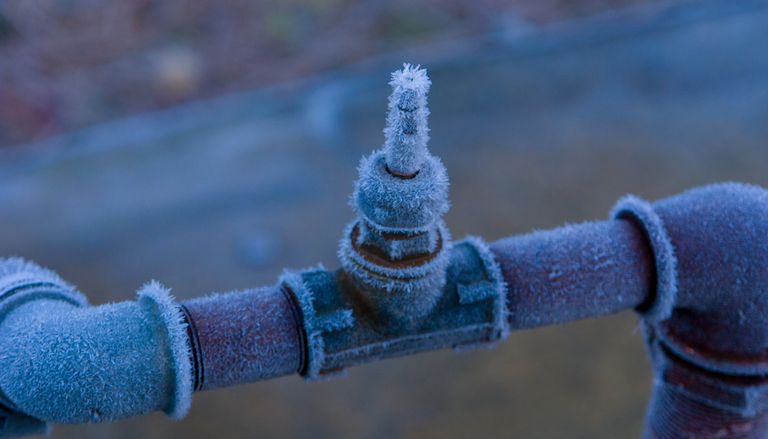Shielding Your Pipes from Freezing Issues: Critical Tips
Shielding Your Pipes from Freezing Issues: Critical Tips
Blog Article
They are making a few good points related to 6 Ways to Prevent Frozen Pipes overall in this post further down.

Cold weather can damage your plumbing, especially by freezing pipes. Right here's how to prevent it from happening and what to do if it does.
Introduction
As temperature levels decline, the threat of frozen pipes increases, potentially resulting in expensive fixings and water damage. Understanding just how to avoid frozen pipes is important for home owners in chilly climates.
Recognizing Icy Pipelines
What triggers pipelines to ice up?
Pipes freeze when subjected to temperatures below 32 ° F (0 ° C) for extended durations. As water inside the pipes freezes, it increases, putting pressure on the pipeline walls and possibly causing them to rupture.
Risks and problems
Frozen pipes can bring about supply of water disruptions, property damages, and pricey fixings. Burst pipelines can flooding homes and create substantial structural damages.
Indicators of Frozen Water Lines
Determining icy pipes early can stop them from breaking.
How to recognize icy pipes
Try to find decreased water flow from taps, unusual smells or sounds from pipelines, and visible frost on revealed pipes.
Prevention Tips
Insulating at risk pipes
Wrap pipelines in insulation sleeves or utilize warmth tape to safeguard them from freezing temperature levels. Concentrate on pipes in unheated or outside areas of the home.
Heating methods
Keep interior spaces effectively warmed, particularly locations with plumbing. Open cupboard doors to enable warm air to flow around pipelines under sinks.
Safeguarding Outside Plumbing
Garden hose pipes and outdoor taps
Disconnect and drain pipes garden pipes before winter months. Set up frost-proof faucets or cover outdoor taps with insulated caps.
What to Do If Your Pipes Freeze
Immediate activities to take
If you think icy pipes, keep taps open to eliminate stress as the ice melts. Utilize a hairdryer or towels soaked in hot water to thaw pipes gradually.
Long-Term Solutions
Structural modifications
Consider rerouting pipes away from outside walls or unheated locations. Include added insulation to attics, cellars, and crawl spaces.
Updating insulation
Buy top notch insulation for pipes, attics, and walls. Correct insulation helps maintain constant temperatures and reduces the threat of frozen pipes.
Final thought
Preventing icy pipelines calls for aggressive procedures and quick actions. By recognizing the causes, signs, and preventive measures, house owners can protect their pipes during winter.
5 Ways to Prevent Frozen Pipes
Drain Outdoor Faucets and Disconnect Hoses
First, close the shut-off valve that controls the flow of water in the pipe to your outdoor faucet. Then, head outside to disconnect and drain your hose and open the outdoor faucet to allow the water to completely drain out of the line. Turn off the faucet when done. Finally, head back to the shut-off valve and drain the remaining water inside the pipe into a bucket or container. Additionally, if you have a home irrigation system, you should consider hiring an expert to clear the system of water each year.
Insulate Pipes
One of the best and most cost-effective methods for preventing frozen water pipes is to wrap your pipes with insulation. This is especially important for areas in your home that aren’t exposed to heat, such as an attic. We suggest using foam sleeves, which can typically be found at your local hardware store.
Keep Heat Running at 65
Your pipes are located inside your walls, and the temperature there is much colder than the rest of the house. To prevent your pipes from freezing, The Insurance Information Institute suggests that you keep your home heated to at least 65 degrees, even when traveling. You may want to invest in smart devices that can keep an eye on the temperature in your home while you’re away.
Leave Water Dripping
Moving water — even a small trickle — can prevent ice from forming inside your pipes. When freezing temps are imminent, start a drip of water from all faucets that serve exposed pipes. Leaving a few faucets running will also help relieve pressure inside the pipes and help prevent a rupture if the water inside freezes.
Open Cupboard Doors
Warm your kitchen and bathroom pipes by opening cupboards and vanities. You should also leave your interior doors ajar to help warm air circulate evenly throughout your home.

We are very occupied with How to Prevent Your Pipes From Freezing and I hope you enjoyed the new piece. Enjoyed our article? Please quickly share it. Help someone else locate it. Thanks for your time. Kindly check our website back soon.
Call Today Report this page